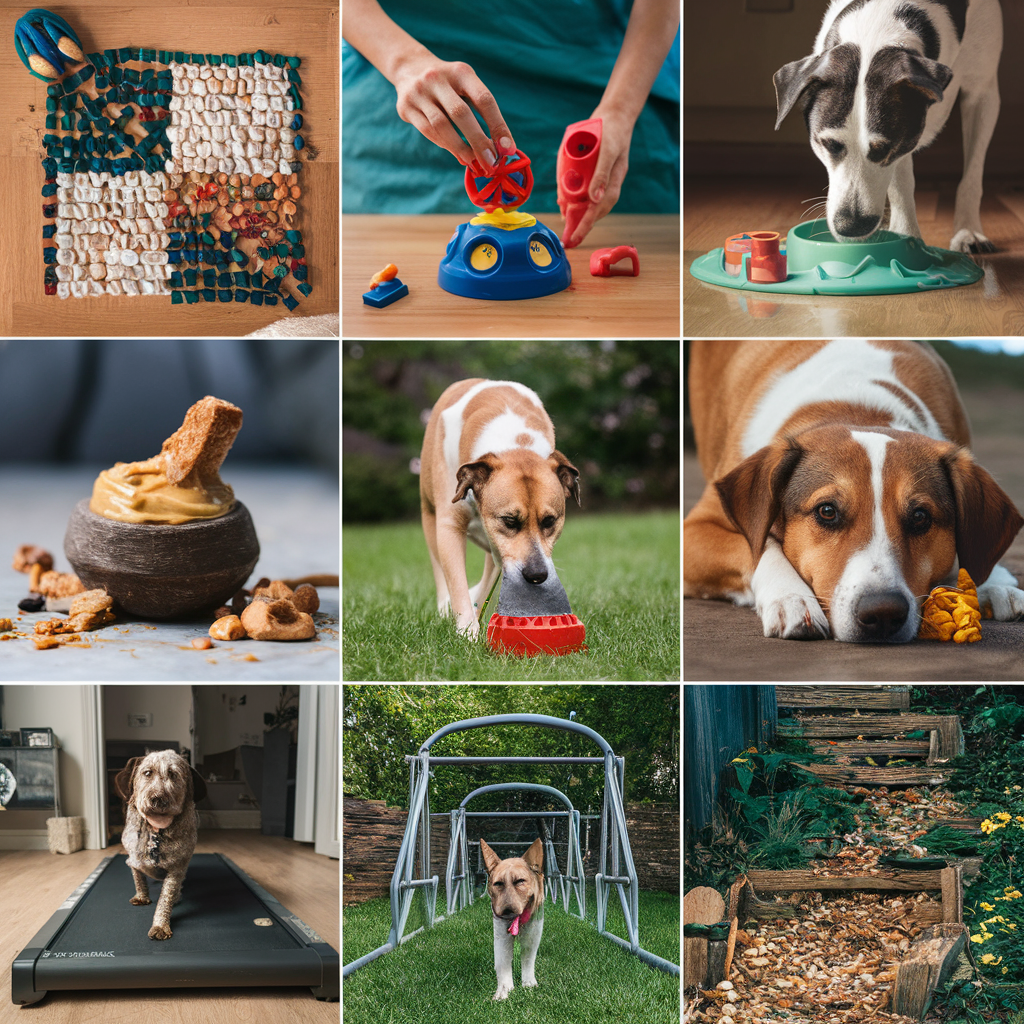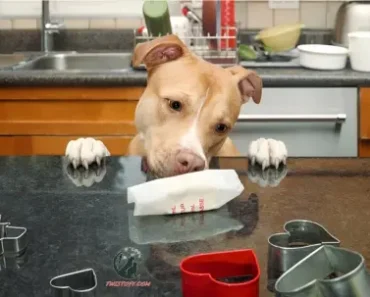
Canine Enrichment
Canine Enrichment: Ideas for Providing Mental Stimulation and Preventing Boredom
Canine enrichment is crucial for keeping your dog healthy both mentally and physically. By integrating enrichment activities into your dog’s daily routine, you can enhance their quality of life, reduce stress, and prevent many behavior problems caused by boredom. This article explores various strategies and tools, including puzzle toys and interactive games, that you can use to provide meaningful enrichment for your canine companion.
Understanding Canine Enrichment
Canine enrichment refers to activities and practices that stimulate a dog’s mind and engage their senses, encouraging them to use their natural abilities in novel ways. Enrichment is essential because it:
- Prevents boredom and reduces destructive behavior
- Improves problem-solving skills
- Enhances the human-animal bond
- Keeps dogs physically fit and mentally sharp
Advanced Enrichment Techniques
To further your dog’s enrichment, consider the following advanced techniques that can be tailored to suit individual preferences and capabilities:
-
Obedience Training Progressions:
-
- Teach new commands regularly to challenge their cognitive abilities.
- Increase the complexity of commands, combining several into sequences that your dog must remember and execute.
- Adventure Walks:
-
- Change your walking route frequently to introduce new smells and sights.
- Encourage your dog to engage with the environment by allowing them to explore safely under supervision.
- Interactive Technology:
-
- Utilize dog-friendly apps and games that require your dog to interact with a tablet or smartphone to receive rewards.
- Consider electronic puzzle toys that stimulate problem-solving skills.
Types of Canine Enrichment

Canine Enrichment
-
Sensory Enrichment:
-
- Visual: Provide opportunities to watch wildlife or other dogs.
- Auditory: Play different types of music or animal sounds.
- Olfactory: Use scented toys or hide treats for them to find.
- Tactile: Offer various textures for them to walk on or dig through.
- Taste: Introduce new food flavors and textures.
-
Social Enrichment:
-
- Playdates: Schedule regular interactions with other dogs.
- New People: Introduce your dog to new people to enhance their social skills.
-
Cognitive Enrichment:
-
- Training Sessions: Regular, short training sessions using positive reinforcement.
- Puzzle Toys: Toys that require thought to release treats.
-
Physical Enrichment:
-
- Agility Training: Courses that challenge their physical and mental abilities.
- Interactive Toys: Toys that move unpredictably and encourage chasing.
-
Feeding Enrichment:
-
- Food Puzzles: Devices that make dogs work for their meals.
- Scatter Feeding: Sprinkle food across the yard or on a snuffle mat to encourage foraging.
Implementing Canine Enrichment at Home
Daily Routines
- Morning: Begin the day with a stimulating puzzle toy.
- Midday: Engage in a training session or outdoor activity.
- Evening: Wind down with a gentle sensory activity like massage or soft music.
Interactive Games and Activities
- Hide and Seek: Hide treats or yourself and let your dog find them.
- Tug of War: Use a safe toy to play tug of war, teaching them to ‘drop it’ on command.
- Fetch Variations: Introduce rules or commands to make traditional games more challenging.
Structured Play Sessions
- Purpose-Driven Play: Each play session should have a clear purpose, whether it’s to improve fitness, agility, or cognitive skills.
- Supervised Group Play: Allow your dog to play with other dogs in a controlled environment, which can be great for social enrichment.
Enrichment for Special Needs Dogs
- For Older Dogs: Tailor activities to be gentler, focusing on scent work or gentle puzzle solving that does not require much physical exertion.
- For Dogs with Disabilities: Adapt games to meet their ability levels, for instance using scents in games for visually impaired dogs, or floating toys for dogs with mobility issues in water therapy sessions.
Community and Social Enrichment
- Dog Sports Clubs: Joining clubs can provide structured settings for enrichment such as agility, flyball, or dock diving.
- Therapy Work: Training your dog to engage in therapy work can be enriching for both your dog and the people they interact with.
Behavioral Enrichment Integration
- Routine Integration: Embed enrichment activities into the daily routine to ensure consistent mental stimulation.
- Behavioral Signs: Monitor your dog’s behavior for signs of increased engagement or potential frustration, adjusting activities accordingly.
Puzzle Toys and How They Help
- Treat-Dispensing Balls: Encourages dogs to roll the toy to release treats.
- Puzzle Boards: Dogs need to solve puzzles to open compartments for treats.
- Snuffle Mats: Mimic foraging in the wild, making mealtime fun and engaging.
DIY Enrichment Ideas
- Bottle Spin: Suspend a plastic bottle from a string and put treats inside it; dogs spin the bottle to release the treats.
- Muffin Tin Puzzles: Place treats in some holes of a muffin tin and cover all holes with tennis balls.
- Frozen Treats: Freeze treats in ice cubes or create layers of broth and treats in a container for licking.
Challenges and Considerations
- Safety First: Always supervise your dog with new toys and games.
- Allergies and Diet: Be mindful of the treats used in puzzle toys.
- Individual Needs: Tailor activities to your dog’s age, health, and preference.
Enrichment Toys and Their Benefits
- Rotating Toys: Regularly change the toys available to your dog to keep them interested. Each type of toy should serve a different purpose:
-
- Chew Toys: Satisfy the need to gnaw.
- Fetch Toys: Encourage running and retrieving.
- Tug Toys: Allow controlled challenges and physical engagement with the owner.
- DIY Puzzle Toys: Create homemade toys that stimulate your dog’s brain, such as:
-
- Box puzzles: Hide a treat inside a box and let your dog figure out how to open it.
- Puzzle feeders: DIY versions can be made using PVC pipes with holes drilled in them for treats to fall out as the dog manipulates the toy.
Enrichment Toys and Their Benefits

Canine Enrichment
- Rotating Toys: Regularly change the toys available to your dog to keep them interested. Each type of toy should serve a different purpose:
-
- Chew Toys: Satisfy the need to gnaw.
- Fetch Toys: Encourage running and retrieving.
- Tug Toys: Allow controlled challenges and physical engagement with the owner.
- DIY Puzzle Toys: Create homemade toys that stimulate your dog’s brain, such as:
-
- Box puzzles: Hide a treat inside a box and let your dog figure out how to open it.
- Puzzle feeders: DIY versions can be made using PVC pipes with holes drilled in them for treats to fall out as the dog manipulates the toy.
Structured Play Sessions
- Purpose-Driven Play: Each play session should have a clear purpose, whether it’s to improve fitness, agility, or cognitive skills.
- Supervised Group Play: Allow your dog to play with other dogs in a controlled environment, which can be great for social enrichment.
Enrichment for Special Needs Dogs
- For Older Dogs: Tailor activities to be gentler, focusing on scent work or gentle puzzle solving that does not require much physical exertion.
- For Dogs with Disabilities: Adapt games to meet their ability levels, for instance using scents in games for visually impaired dogs, or floating toys for dogs with mobility issues in water therapy sessions.
Community and Social Enrichment
- Dog Sports Clubs: Joining clubs can provide structured settings for enrichment such as agility, flyball, or dock diving.
- Therapy Work: Training your dog to engage in therapy work can be enriching for both your dog and the people they interact with.
Behavioral Enrichment Integration
- Routine Integration: Embed enrichment activities into the daily routine to ensure consistent mental stimulation.
- Behavioral Signs: Monitor your dog’s behavior for signs of increased engagement or potential frustration, adjusting activities accordingly.
Conclusion and Recommendations
Continuously integrating varied and innovative enrichment strategies into your dog’s life is key to developing a well-rounded, satisfied pet. The effectiveness of these methods lies in their regular assessment and adaptation to fit your dog’s evolving needs.
- Review and Adapt: Regularly assess the effectiveness of your enrichment activities and make changes as needed.
- Community Involvement: Share experiences and tips with other dog owners to learn about new enrichment ideas and build a supportive community.
By implementing these comprehensive strategies, you provide your dog with a stimulating environment that not only wards off boredom but also promotes a healthy, active, and intellectually satisfying lifestyle. Start exploring these ideas to find what best suits your canine friend and watch them thrive in an enriched environment.
Conclusion
Canine enrichment not only prevents boredom but also nurtures your dog’s overall well-being. By continually introducing new activities and challenges, you ensure that your dog’s life is full and enjoyable. Remember, the goal of enrichment is to provide a balanced lifestyle that includes physical exercise, mental stimulation, and emotional nurturing. This proactive approach will foster a happier, healthier relationship between you and your dog.






